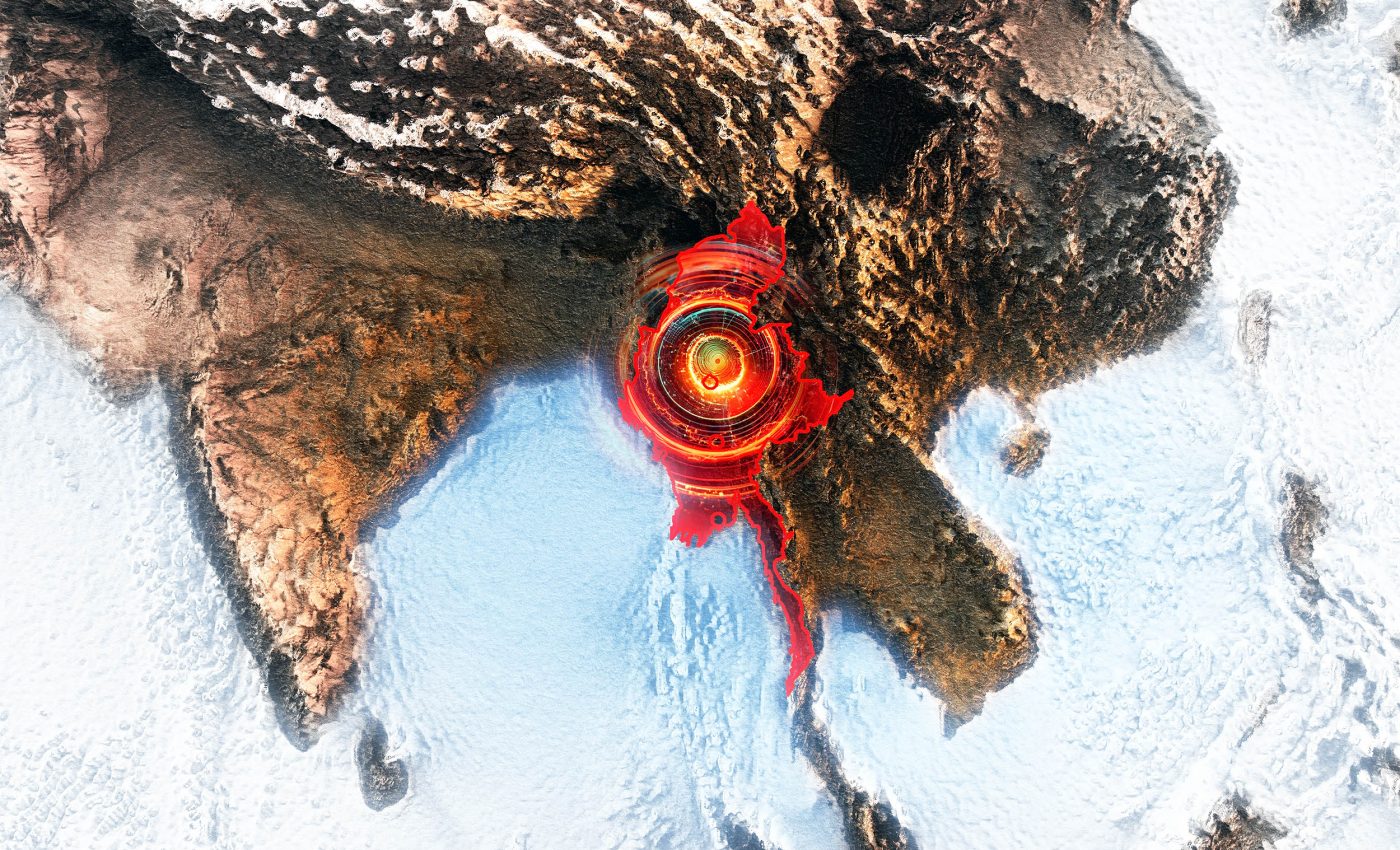
Three 'superfactors' combined to create the longest and fastest-moving earthquake ever recorded
The magnitude 7.7 earthquake in Myanmar on March 28, 2025 involved a fast-moving rupture along the Sagaing Fault, according to a new study.
The earthquake also caused building damage and ground failure across a wide stretch of central Myanmar.
A section of the fault broke into supershear, with the rupture outrunning the shear waves moving through the rock. That exceptional speed helps explain why this quake stands out among modern continental events.
The study was led by Dara E. Goldberg, a research geophysicist at the U.S. Geological Survey (USGS) Earthquake Hazards Program.
Her research focuses on rapid earthquake characterization so that scientists can better estimate shaking and hazards from major faults.
Tracking an ultrafast rupture
The Mandalay rupture extended roughly 300 miles, about 475 kilometers, along the Sagaing Fault. That distance is more than twice what standard magnitude scaling rules predict for a quake of that size.
To check how fast the rupture moved, the team combined global seismic records with satellite measurements of ground motion and damage. Those data let them track the slip second by second along the full path of the rupture.
The models point to southern segments moving faster than three miles per second, a clear sign of supershear motion. They also identified a Rayleigh Mach wave, a concentrated surface wave launched by that ultrafast rupture, passing through parts of Thailand.
Seismologists now see Mandalay and the 1906 San Francisco quake as members of a small class of rare, very long continental ruptures.
These case studies anchor expectations for how similar faults might behave in heavily populated regions in the future.
How the rupture raced ahead
Most earthquakes send out seismic shear-waves, side-to-side vibrations that carry much of the damaging ground motion. The rupture itself, the slipping crack on the fault, usually travels more slowly than those waves.
In supershear events, the crack speed overtakes the shear waves, so energy piles up along a narrow cone ahead of the rupture.
A USGS analysis shows that this beaming can raise shaking at some distances while reducing it right beside the fault.
In Myanmar, the fast moving portion of the rupture remained on a long southern stretch instead of dropping back to slower speeds quickly.
That sustained behavior extended the zone of especially intense shaking beyond what standard models would have forecast for such an event.
For engineers and planners, that means distance from the fault is not always a simple guide to how strong the shaking might be.
Under certain conditions, a town tens of miles away can experience stronger shaking than one that sits much closer to the fault trace.
Speed of the Myanmar earthquake
One key ingredient was the fault geometry, the overall shape and smoothness of the Sagaing Fault where it broke.
In that southern segment, the fault trace stays nearly straight for many miles, which lets the rupture run without hitting sharp bends.
A second ingredient was the slow buildup of stress since the last major quake on this part of the Sagaing Fault in 1839.
Over nearly two centuries, the plates on either side kept creeping, storing energy that could be released in one large rupture.
The third ingredient came from contrasting rock properties, differences in stiffness and strength across the two sides of the fault.
That contrast changes how seismic energy reflects and refracts at the fault plane, which can help a fast rupture keep going.
Buildup to a fast rupture
Together, a straight path, long-stored stress, and strong rock contrasts created a fault section that naturally encouraged a very fast rupture.
The team argues that other strike slip faults with similar combinations should be watched closely for the potential to produce supershear earthquakes.
Close to the fault, many neighborhoods experienced violent shaking that cracked walls and warped streets and bridges.
In places where the shaking was strongest, the surface fractured, lifted, and slumped as the ground lost its firmness.
This process, known as soil liquefaction, happens when loose, wet sediments temporarily lose strength during strong shaking.
Breaking the sound barrier in rocks
“Supershear earthquakes are like breaking the sound barrier, but in rock. They create seismic shock fronts that can double the intensity of shaking, even hundreds of kilometers away,” said Lingsen Meng, a professor at UCLA.
With field teams restricted by conflict, the scientists turned to satellite based damage proxy maps, images that flag the strongest surface changes.
Those maps, together with high resolution optical scenes, revealed long belts of heavy damage that closely tracked the supershear portion of the fault.
Lessons from the Myanmar earthquake
Many building codes rely on probabilistic seismic hazard analysis, a statistical method that estimates how often given levels of shaking might occur.
For large strike slip faults, those models usually assume a tight link between earthquake magnitude and the maximum length of rupture.
The Mandalay results show that some earthquakes can produce ultralong ruptures without reaching the very largest magnitudes assumed in many hazard maps.
If the chance of these rare, long ruptures is left out, the true risk to people and infrastructure along major faults may be underestimated.
Long, straight strike slip faults that cut through populated regions of Asia and along parts of California share several traits with the Sagaing Fault.
Scientists are now looking more closely at where stress has accumulated on such faults and how changes in rock properties might affect future ruptures.
Better instrumentation along these systems will help capture detailed motion during future large earthquakes.
The study is published in the journal Science.
—–
Like what you read? Subscribe to our newsletter for engaging articles, exclusive content, and the latest updates.
Check us out on EarthSnap, a free app brought to you by Eric Ralls and Earth.com.
—–













